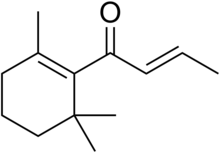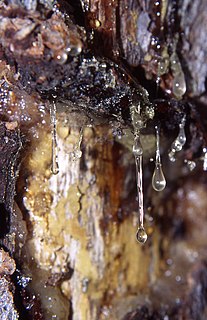
Terpenes are a class of natural products consisting of compounds with the formula (C5H8)n. Comprising more than 30,000 compounds, these unsaturated hydrocarbons are produced predominantly by plants, particularly conifers. Terpenes are further classified by the number of carbons: monoterpenes (C10), sesquiterpenes (C15), diterpenes (C20), etc. A well known monoterpene is alpha-pinene, a major component of turpentine.

Carotenoids, also called tetraterpenoids, are yellow, orange, and red organic pigments that are produced by plants and algae, as well as several bacteria, and fungi. Carotenoids give the characteristic color to pumpkins, carrots, parsnips, corn, tomatoes, canaries, flamingos, salmon, lobster, shrimp, and daffodils. Carotenoids can be produced from fats and other basic organic metabolic building blocks by all these organisms. The only land dwelling arthropods known to produce carotenoids are aphids, and spider mites, which acquired the ability and genes from fungi. It is also produced by endosymbiotic bacteria in whiteflies. Carotenoids from the diet are stored in the fatty tissues of animals, and exclusively carnivorous animals obtain the compounds from animal fat. In the human diet, absorption of carotenoids is improved when consumed with fat in a meal. Cooking carotenoid-containing vegetables in oil and shredding the vegetable both increase carotenoid bioavailability.
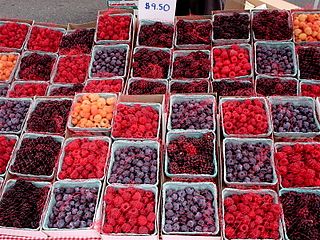
Phytochemicals are chemical compounds produced by plants, generally to help them resist fungi, bacteria and plant virus infections, and also consumption by insects and other animals. The name comes from Greek φυτόν (phyton) 'plant'. Some phytochemicals have been used as poisons and others as traditional medicine.
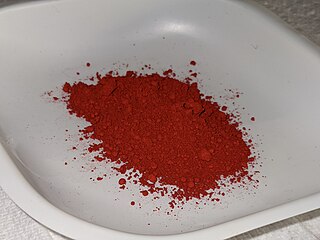
β-Carotene is an organic, strongly coloured red-orange pigment abundant in fungi, plants, and fruits. It is a member of the carotenes, which are terpenoids (isoprenoids), synthesized biochemically from eight isoprene units and thus having 40 carbons. Among the carotenes, β-carotene is distinguished by having beta-rings at both ends of the molecule. β-Carotene is biosynthesized from geranylgeranyl pyrophosphate.

Richard Johann Kuhn was an Austrian-German biochemist who was awarded the Nobel Prize in Chemistry in 1938 "for his work on carotenoids and vitamins".

Astaxanthin is a keto-carotenoid with various uses including dietary supplement and food dye. It belongs to a larger class of chemical compounds known as terpenes built from five carbon precursors, isopentenyl diphosphate, and dimethylallyl diphosphate. Astaxanthin is classified as a xanthophyll, but currently employed to describe carotenoid compounds that have oxygen-containing components, hydroxyl (-OH) or ketone (C=O), such as zeaxanthin and canthaxanthin. Indeed, astaxanthin is a metabolite of zeaxanthin and/or canthaxanthin, containing both hydroxyl and ketone functional groups. Like many carotenoids, astaxanthin is a lipid-soluble pigment. Its red-orange colour is due to the extended chain of conjugated double bonds at the centre of the compound.

Sporopollenin is one of the most chemically inert biological polymers. It is a major component of the tough outer (exine) walls of plant spores and pollen grains. It is chemically very stable and is usually well preserved in soils and sediments. The exine layer is often intricately sculptured in species-specific patterns, allowing material recovered from lake sediments to provide useful information to palynologists about plant and fungal populations in the past. Sporopollenin has found uses in the field of paleoclimatology as well. Sporopollenin is also found in the cell walls of several taxa of green alga, including Phycopeltis and Chlorella.
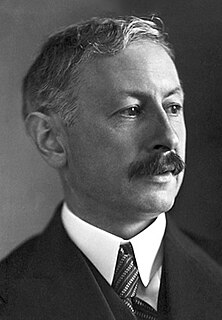
Professor Paul Karrer FRS FRSE FCS was a Swiss organic chemist best known for his research on vitamins. He and Norman Haworth won the Nobel Prize for Chemistry in 1937.

Cyclodextrins are a family of cyclic oligosaccharides, consisting of a macrocyclic ring of glucose subunits joined by α-1,4 glycosidic bonds. Cyclodextrins are produced from starch by enzymatic conversion. They are used in food, pharmaceutical, drug delivery, and chemical industries, as well as agriculture and environmental engineering.
The ionones are a series of closely related chemical substances that are part of a group of compounds known as rose ketones, which also includes damascones and damascenones. Ionones are aroma compounds found in a variety of essential oils, including rose oil. β-Ionone is a significant contributor to the aroma of roses, despite its relatively low concentration, and is an important fragrance chemical used in perfumery. The ionones are derived from the degradation of carotenoids.

Gold(III) chloride, traditionally called auric chloride, is a compound of gold and chlorine with the molecular formula Au2Cl6. The "III" in the name indicates the gold has an oxidation state of +3, which is typical for many gold compounds. Gold(III) chloride is hygroscopic and decomposes in visible light. This compound is a dimer of AuCl3. This compound has few uses, although it does catalyze a variety of organic reactions.

Crocin is a carotenoid chemical compound that is found in the flowers crocus and gardenia. Crocin is the chemical primarily responsible for the color of saffron.

Antimony trichloride is the chemical compound with the formula SbCl3. It is a soft colorless solid with a pungent odor and was known to alchemists as butter of antimony.
Tetraterpenes are terpenes consisting of eight isoprene units and have the molecular formula C40H64. Tetraterpenoids (including many carotenoids) are tetraterpenes that have been chemically modified, as indicated by the presence of oxygen-containing functional groups.
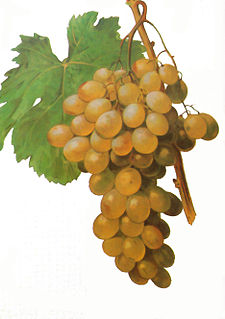
Muscat of Alexandria is a white wine grape that is a member of the Muscat family of Vitis vinifera. It is considered an "ancient vine", and wine experts believe it is one of the oldest genetically unmodified vines still in existence. The grape originated in North Africa, and the name is probably derived from its association with Ancient Egyptians who used the grape for wine making. It is also a table grape used for eating and raisins.

ChemSpider is a database of chemicals. ChemSpider is owned by the Royal Society of Chemistry.

Damascenones are a series of closely related chemical compounds that are components of a variety of essential oils. The damascenones belong to a family of chemicals known as rose ketones, which also includes damascones and ionones. beta-Damascenone is a major contributor to the aroma of roses, despite its very low concentration, and is an important fragrance chemical used in perfumery.

The aromas of wine are more diverse than its flavors. The human tongue is limited to the primary tastes perceived by taste receptors on the tongue – sourness, bitterness, saltiness, sweetness and savoriness. The wide array of fruit, earthy, leathery, floral, herbal, mineral, and woodsy flavor present in wine are derived from aroma notes sensed by the olfactory bulb. In wine tasting, wine is sometimes smelled before taking a sip in order to identify some components of the wine that may be present. Different terms are used to describe what is being smelled. The most basic term is aroma which generally refers to a "pleasant" smell as opposed to odor which refers to an unpleasant smell or possible wine fault. The term aroma may be further distinguished from bouquet which generally refers to the smells that arise from the chemical reactions of fermentation and aging of the wine.

A chemical compound is a chemical substance composed of many identical molecules composed of atoms from more than one element held together by chemical bonds. A molecule consisting of atoms of only one element is therefore not a compound.

Wine is a complex mixture of chemical compounds in a hydro-alcoholic solution with a pH around 4.
